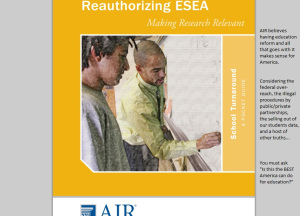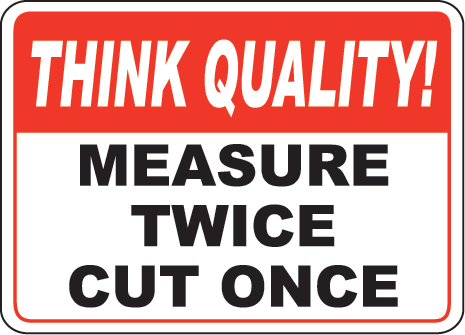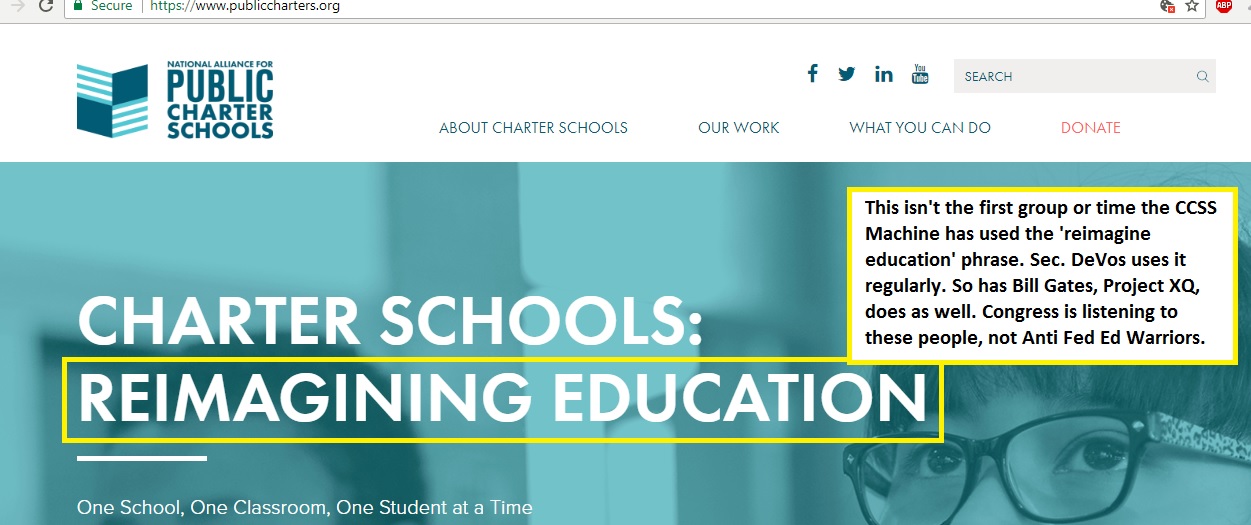
Welcome Back, Friends!
I hope you had a restful Thanksgiving break. I know I am ready to once again, pick up my anti Common Core sword and get back in the fight. Today’s post will tackle educational waivers..friend of our educational system??? Or foe to it? Let’s find out.
Just what is a waiver?
According to the U.S. Dept. of Ed’s website page about ‘Flexibility Waivers’, allow states, educational systems to ‘now have greater flexibility in how they may use federal program funds to support State and local school improvement efforts.’ Also, according to the same web page, the flexibility factor allows for ‘opportunity’. It mentions ‘wonders’ like the waivers tied to Goals 2000 (which I’ve written about in earlier posts and its ties to Common Core). Here’s what will probably be my ‘favorite’ about the US DOE’s description, “adapt federal programs in ways that best educate children and improve teaching and learning.”
These waivers have been connected to several fed ed programs, especially in the last few years. NCLB and ESEA: No Child Left Behind, the reauthorized Elementary and Secondary Education Act, respectively.
To see the entire page for yourself, visit: http://www2.ed.gov/nclb/freedom/local/flexibility/index.html
What about my state?
Again, using the US DOE website, let’s see what the Press Release about those Flexibility Waivers had to say, this is from back in 2013.
“The U.S. Department of Education announced today that states whose waivers from certain provisions of federal education law will expire at the end of the 2013-2014 school year will soon be able to request renewals of their reform plans, for up to two more years.
Extending their waivers through 2016 will allow these 34 eligible states and the District of Columbia to continue moving forward on their ambitious but achievable plans to prepare all students for college and career, focus aid on the neediest students, and support effective teaching and school leadership.” Those 34 states? “Arizona, Arkansas, Colorado, Connecticut, Delaware, Florida, Georgia, Idaho, Indiana, Kansas, Kentucky, Louisiana, Maryland, Massachusetts, Michigan, Minnesota, Mississippi, Missouri, Nevada, New Jersey, New Mexico, New York, North Carolina, Ohio, Oklahoma, Oregon, Rhode Island, South Carolina, South Dakota, Tennessee, Utah, Virginia, Washington and Wisconsin, and the District of Columbia.” The release does include the rest of the states as well, so be sure to see where yours stands.
So what does this REALLY mean?
It means IF you live in one of the above states, steps may have already been taken earlier in 2014 to grant your state an extension to CONTINUE education reform that is from a federal level. Some of the ‘guidelines’ your state MUST meet include, staying on a ESEA track, monitoring ESEA issues that exist and fixing them, and meeting a high bar of quality. (To see the entire press release: http://www.ed.gov/news/press-releases/states-granted-waivers-no-child-left-behind-allowed-reapply-renewal-2014-and-201)
I still don’t get it, why should I consider it a ‘big deal’ if my state gets an extension or not?
In looking beyond the U.S. DOE to the CEP (Center for Education Policy), which is another supportive group for CCSS, we can access the ‘Flexibility Waiver Watcher’! (to access the page you’ll need to find your state’s activities, http://www.cep-dc.org/index.cfm?DocumentSubTopicID=48 ) NOTE: Be sure to spend a few minutes looking into the history of CEP, it’s quite an account of fed led ed.
According to the CEP, their explanation page about the waivers and why extension are important it boils down to one thing, states being accountable. However, not so simply put is HOW the accountability is to be extracted from each state. For instance, assessments, more assessments, AND outcome based education results are the main 3. To see the rest of the list of requirements that pull in not only No Child Left Behind, but the reauthorized ESEA (Elementary and Secondary Act), Riddle_FAQ_SAP_091911
Okay, let’s assume you are at the page with the US Map. Scroll down to the part that says ‘after 2011 Waiver Watcher’. You should see an assortment of green colors. Since I live in NC, we’ll be using it as an example of just what getting an extended waiver means for the students, teachers, AND principals of the state. The first thing I do, is click on my state’s shape. This will take me to another page that’s exclusively about NC. Cool, so far. I see that our status is ‘Waiver Extended’. However, I am a bit unclear as to what that entails for each of our citizens. So, I click on the “August 14, 2014” Extension Letter that’s just below the announcement link from the same day by the President of the USA. The extension letter states that yes, NC has been granted an extension of one year on the ESEA waiver. I see there are several things a group from the US Dept. of Ed have found while considering NC’s extension. One that strikes me, is a ‘monitoring report’, then I see almost at the closing of the letter, this, “I am confident that North Carolina will continue to implement the reforms described in its approved ESEA flexibility request and advance its efforts to hold schools and school districts accountable for the achievement of all students.” I must pause here for a quick minute and ask, if my state has all the opportunity to be free and flexible, why is my state being monitored, and better yet, just whom is monitoring it? If you want to see the entire letter NC received, nc2extltr8142014
NC’s Monitoring report:
This Report was also accessed from the CEP’s NC Page and the live link was just below the announcement link from August 2014. I notice it says “Part B”, yet, “Part A” isn’t included..hhmm..let’s see what else I can find. Right off the bat, the ‘purpose’ of being monitored, “The U.S. Department of Education (ED) is committed to supporting State educational agencies (SEAs) as they implement ambitious reform agendas through their approved ESEA flexibility requests.” Does anyone need a reminder as to how the ‘states’ were coerced into the Common Core Standards? Okay, back to business…
I also see from the Monitoring Report that things like Data Collection, implementing College/Career Readiness, high stakes assessments, rewarding schools for performances, evaluating teachers and principals. I also see how implementation should become STRONGER in its efforts via the SEAs and the LEAs (State Education Agencies/Local Education Agencies). Not quite sure what power these two groups have, I access the overview of their jobs from the US Dept of Ed’s guide and notice they have a tremendous power, we the citizens used to be able to exercise in school choices, decisions, and systems. See the overview,
http://www2.ed.gov/policy/gen/guid/fpco/pdf/sealea_overview.pdf NOTE: one is that it is via FERPA this overview is given and two, the date is 2011.
Finally, on the Monitoring Report, it’s the last sentence that is really eye opening. Listed in the items that should continue or be put into motion is the ‘parent, community involvement’. See the sentence for yourselves, “ED encourages the NCDPI to continue to gain understanding from parents who did not always “agree” and continue to try to aggressively include these parents in the education of their children.” NOTE: ED is the Report’s shorthand for the Dept. of Ed, NCDPI is short for NC Dept. of Public Instruction.
To see the entire Report, ncpartbrpt32014 To see NC’s 2012 ESEA Flexibility Application, which details where ‘college and career readiness’ standards were to be implemented, esea-flexibility-request
A related resource you may find helpful:
Back in 2011, AIR (American Institutes for Research) also extremely supportive of Common Core and student data collection, published a handy, dandy pocket guide to why NCLB/ESEA flexibility was a great tool. To access how ESEA can turn your school around, http://www.air.org/sites/default/files/downloads/report/0669_PG_SchoolTurnaround_Online_d41_0.pdf

Finally, we have an answer?!
Remember, we were setting out on this post to ascertain if education waivers were friend or foe to our educational systems. I hope you will agree that it appears we have an answer that in the present way waivers are being used, the flexibility is an illusion. As such, it is NO friend to our students. Remember, all the parts of CCSS aren’t quite into place. High stakes testing is a huge component for the states to be accountable. However, remember this..the US Constitution says that the states are sovereign, not the federal government. We, as citizens are to hold the federal government accountable, not have the fed led ed hold us hostage to waivers that are mandates dressed as opportunity. If we wish to give our schools systems real opportunity, we’d first need to have reform that is legal, that honors the Constitution, and doesn’t lay down to bed with the public, private partnerships that seek to destroy real school choice with incentives that are a bait and switch.
If you noticed earlier in the post, NC was only granted a one year extension, which means by the end of the 2015-16 school year, even MORE ‘flexibility’ with even MORE ‘opportunities’ can be granted. Folks, 2015 is almost upon us. We’ve been kept from some of this vital information long enough. Take it, share it, use it, and stop the Waivers in your state!
Stay tuned this week because I’ll be looking into other groups hell-bent on making sure your state gets stuck with education reform based on lies, illegal measures, and all at the cost of our student’s futures.


Thank you for this post. I am extremely concerned about the applications for waivers that are currently being submitted. They will further tie our states to Common Core “voluntarily” and that takes us in the wrong direction. As far as I’m concerned, this is an emergency that needs to have parents shine the light on it ASAP.
I am so glad you like the article and have found it helpful. I think there is much about Common Core that needs a spotlight.
Thank you for reading the blog. I have much more information, should you need it.